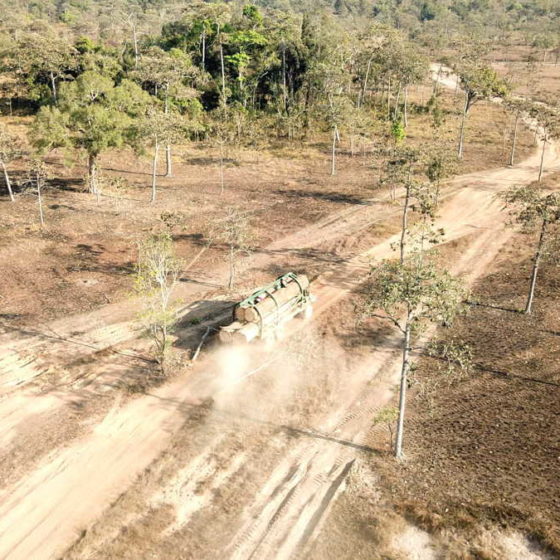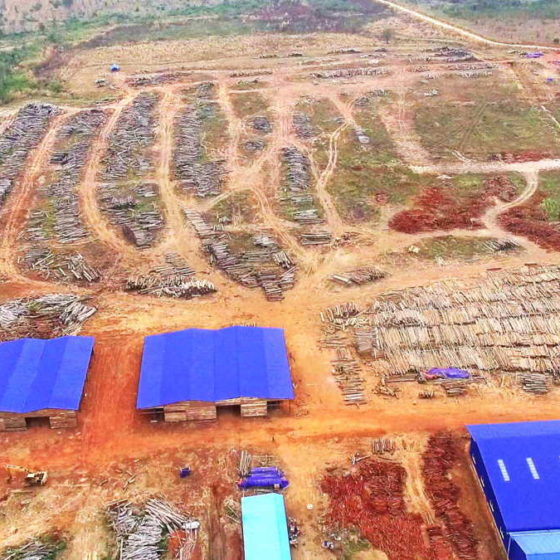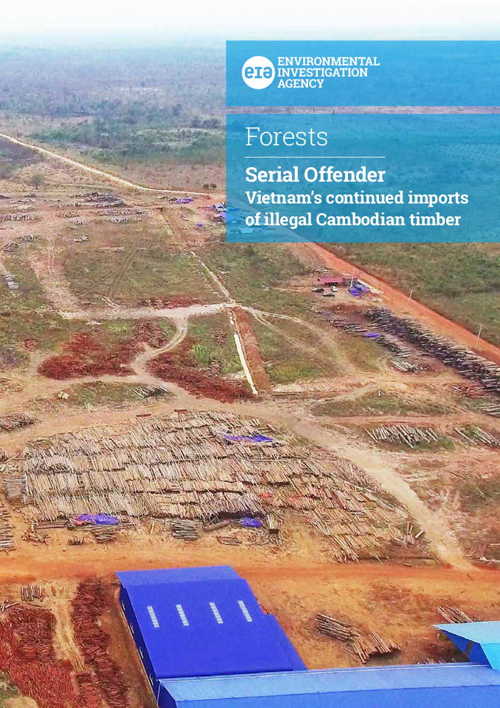Introduction
Vietnam, which has a long history of theft of timber from neighbouring Laos and Cambodia, recently initialled a timber trade agreement with the European Union. This will see Vietnam implement legislation to address imports of illegally harvested or traded timber, in return for timber exports to the EU being deemed to comply with the requirements of the European Union Timber Regulation (EUTR).
With formal signing and ratification of this agreement expected in 2018, EIA went to the region during the 2017-18 dry season to investigate whether the illegal trade in Cambodian timber had ceased.
EIA identified three main areas within Cambodia where substantial illegal logging operations were under way: Virachey National Park in Rattanakiri province, the forests surrounding the Lower Sesan 2 dam in Stung Treng province, and Phnom Prich Wildlife Sanctuary in Mondulkiri province.
EIA tracked timber from these sites to where it entered Vietnam, both through an official border crossing at Hoa Lu in Bình Phước province and Le Thanh in Gia Lai province, and where it was smuggled out of Cambodia and into Vietnam across informal crossings near both Hoa Lu and Le Thanh.
Vietnam continues its role as a serial offender in the illegal timber trade, with large volumes of illegal timber still flowing across the Cambodian border unhindered.
Introduction
Vietnam, which has a long history of theft of timber from neighbouring Laos and Cambodia, recently initialled a timber trade agreement with the European Union. This will see Vietnam implement legislation to address imports of illegally harvested or traded timber, in return for timber exports to the EU being deemed to comply with the requirements of the European Union Timber Regulation (EUTR).
With formal signing and ratification of this agreement expected in 2018, EIA went to the region during the 2017-18 dry season to investigate whether the illegal trade in Cambodian timber had ceased.
EIA identified three main areas within Cambodia where substantial illegal logging operations were under way: Virachey National Park in Rattanakiri province, the forests surrounding the Lower Sesan 2 dam in Stung Treng province, and Phnom Prich Wildlife Sanctuary in Mondulkiri province.
EIA tracked timber from these sites to where it entered Vietnam, both through an official border crossing at Hoa Lu in Bình Phước province and Le Thanh in Gia Lai province, and where it was smuggled out of Cambodia and into Vietnam across informal crossings near both Hoa Lu and Le Thanh.
Vietnam continues its role as a serial offender in the illegal timber trade, with large volumes of illegal timber still flowing across the Cambodian border unhindered.
Still offending in Cambodia
2018 – Case studies
1. Virachey National Park
Vietnamese companies, colluding with corrupt government officials and military personal from both countries illegally logged Virachey National Park in the 2016-2017 dry season.
In 2018, EIA has again uncovered large scale timber theft, focused primarily within the O’Kampha Community Protected Area and Phnom Panha Khlaing Community Forest, directly to the west of O’Tabok. Investigators documented 31 sites where illegal logging was occurring and three Vietnamese logging camps across the north-eastern corner of the national park.
Interviews with local Cambodian Border Police, Vietnamese loggers, and local community members, revealed how the Vietnamese company Yin Tin struck a deal with members of Cambodia’s Border Army Unit 203 to construct a road into the area and extract timber.
Vietnamese workers arrived in the area en-masse in October 2017, bringing earth-moving equipment to construct a road from the Vietnamese border into the national park. Chainsaws and arevs soon followed.
To protect the operation from prying eyes, forest rangers and members of Cambodia’s armed forces blocked roads and prevented access to the forest during logging and transport, while large volumes of timber were smuggled into Vietnam through the Đội Cao Su Thanh Niên rubber plantation in Kon Tum Province – a subsidiary of Vietnamese State Owned Enterprises.
Still offending in Cambodia
2018 – Case studies
1. Virachey National Park
Vietnamese companies, colluding with corrupt government officials and military personal from both countries illegally logged Virachey National Park in the 2016-2017 dry season.
In 2018, EIA has again uncovered large scale timber theft, focused primarily within the O’Kampha Community Protected Area and Phnom Panha Khlaing Community Forest, directly to the west of O’Tabok. Investigators documented 31 sites where illegal logging was occurring and three Vietnamese logging camps across the north-eastern corner of the national park.
Interviews with local Cambodian Border Police, Vietnamese loggers, and local community members, revealed how the Vietnamese company Yin Tin struck a deal with members of Cambodia’s Border Army Unit 203 to construct a road into the area and extract timber.
Vietnamese workers arrived in the area en-masse in October 2017, bringing earth-moving equipment to construct a road from the Vietnamese border into the national park. Chainsaws and arevs soon followed.
To protect the operation from prying eyes, forest rangers and members of Cambodia’s armed forces blocked roads and prevented access to the forest during logging and transport, while large volumes of timber were smuggled into Vietnam through the Đội Cao Su Thanh Niên rubber plantation in Kon Tum Province – a subsidiary of Vietnamese State Owned Enterprises.
Virachey National Park
Virachey National Park
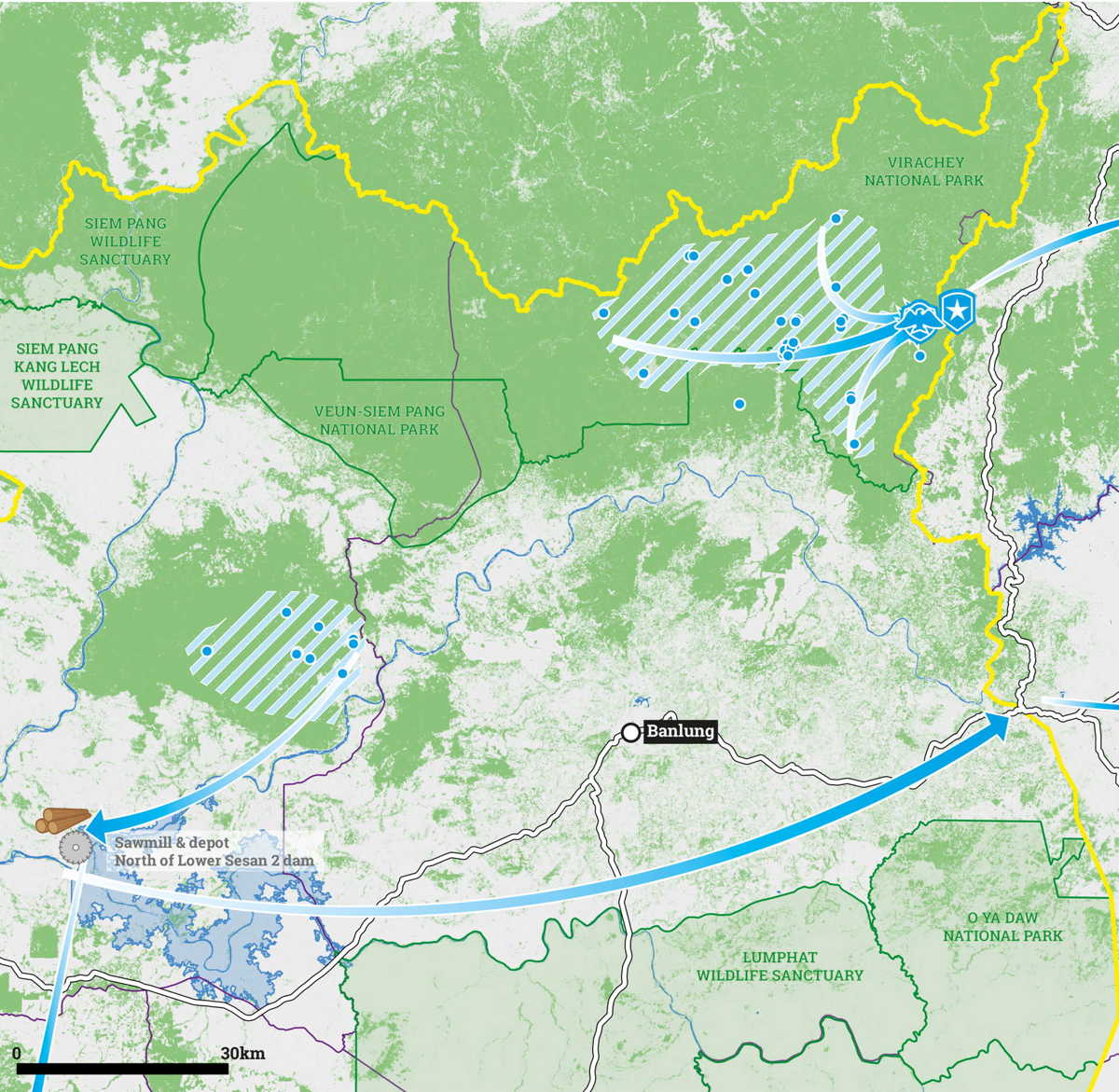
2. Lower Sesan 2 Dam
Ang & Associates Lawyer Co Ltd has faced repeated allegations that it has cleared outside of its concession in the dam’s reservoir since logging began in April 2013. With the reservoir now almost entirely filled, the company’s assertions that it is only logging inside the reservoir hold even less water.
EIA investigators visited the region of the Sesan 2 Dam between September 2017 and March 2018, identifying numerous logging areas well outside of the reservoir boundary and tracking arevs loaded with illegally logged timber to a sprawling sawmilling complex on the reservoir’s banks, 3km north of the barrier itself.
That the Lower Sesan 2 Dam project has become a hub for illegal timber is also well known by the Cambodian Government. Less than a year after logging began, the Ministry of Agriculture demanded that “anarchic deforestation” in the reservoir cease.
However, illegal logging has continued, with trees felled in the surrounding forests and laundered through the dam site.
EIA followed trucks transporting timber from the Lower Sesan 2 sawmill complex on two distinct routes to Vietnam. Trucks crossed into Vietnam near both the Oyadao / Le Thanh border gate, while others headed far south towards Trapaing Sre / Hoa Lu border. At both crossings, EIA observed timber trucks avoiding official border gates, instead making use of informal crossings near the border gates, where timber was ‘legalised’ into the Vietnamese economy by Vietnamese customs agents.
2. Lower Sesan 2 Dam
Ang & Associates Lawyer Co Ltd has faced repeated allegations that it has cleared outside of its concession in the dam’s reservoir since logging began in April 2013. With the reservoir now almost entirely filled, the company’s assertions that it is only logging inside the reservoir hold even less water.
EIA investigators visited the region of the Sesan 2 Dam between September 2017 and March 2018, identifying numerous logging areas well outside of the reservoir boundary and tracking arevs loaded with illegally logged timber to a sprawling sawmilling complex on the reservoir’s banks, 3km north of the barrier itself.
That the Lower Sesan 2 Dam project has become a hub for illegal timber is also well known by the Cambodian Government. Less than a year after logging began, the Ministry of Agriculture demanded that “anarchic deforestation” in the reservoir cease.
However, illegal logging has continued, with trees felled in the surrounding forests and laundered through the dam site.
EIA followed trucks transporting timber from the Lower Sesan 2 sawmill complex on two distinct routes to Vietnam. Trucks crossed into Vietnam near both the Oyadao / Le Thanh border gate, while others headed far south towards Trapaing Sre / Hoa Lu border. At both crossings, EIA observed timber trucks avoiding official border gates, instead making use of informal crossings near the border gates, where timber was ‘legalised’ into the Vietnamese economy by Vietnamese customs agents.
Lower Sesan 2 Dam
Lower Sesan 2 Dam

3. Phnom Prich Wildlife Sanctuary
Logging is not legally allowed within the protected areas of Phnom Prich Wildlife Sanctuary; however, in 2011 and 2012 the Cambodian Government granted logging rights to companies across 60,287 ha of Economic Land Concessions (ELCs) inside the protected area. Almost from their outset, these ELCs were used as a front to launder timber illegally harvested from outside their boundaries.
EIA investigations between September 2017 and March 2018 uncovered illegal logging operations on an unprecedented scale within the wildlife sanctuary, along with large-scale corruption implicating various different elements of the Cambodian Government.
EIA investigators documented a ‘road of tolls’ through Phnom Prich Wildlife Sanctuary, along which bribes are paid to range of different actors, including forest rangers, police, members of the armed forces and even local media. Trucks travelling this road pass four permanent ranger stations and more than 20 checkpoints manned by soldiers and military police, all nominally responsible for policing illegal logging.
The timber is destined for the Vietnamese market, with a majority smuggled out of Cambodia across informal border crossings close to the official Trapaing Sre / Hoa Lu border gate and connected to company warehousing compounds, in order to avoid paying taxes in Cambodia.
3. Phnom Prich Wildlife Sanctuary
Logging is not legally allowed within the protected areas of Phnom Prich Wildlife Sanctuary; however, in 2011 and 2012 the Cambodian Government granted logging rights to companies across 60,287 ha of Economic Land Concessions (ELCs) inside the protected area. Almost from their outset, these ELCs were used as a front to launder timber illegally harvested from outside their boundaries.
EIA investigations between September 2017 and March 2018 uncovered illegal logging operations on an unprecedented scale within the wildlife sanctuary, along with large-scale corruption implicating various different elements of the Cambodian Government.
EIA investigators documented a ‘road of tolls’ through Phnom Prich Wildlife Sanctuary, along which bribes are paid to range of different actors, including forest rangers, police, members of the armed forces and even local media. Trucks travelling this road pass four permanent ranger stations and more than 20 checkpoints manned by soldiers and military police, all nominally responsible for policing illegal logging.
The timber is destined for the Vietnamese market, with a majority smuggled out of Cambodia across informal border crossings close to the official Trapaing Sre / Hoa Lu border gate and connected to company warehousing compounds, in order to avoid paying taxes in Cambodia.
Phnom Prich Wildlife Sanctuary
Phnom Prich Wildlife Sanctuary
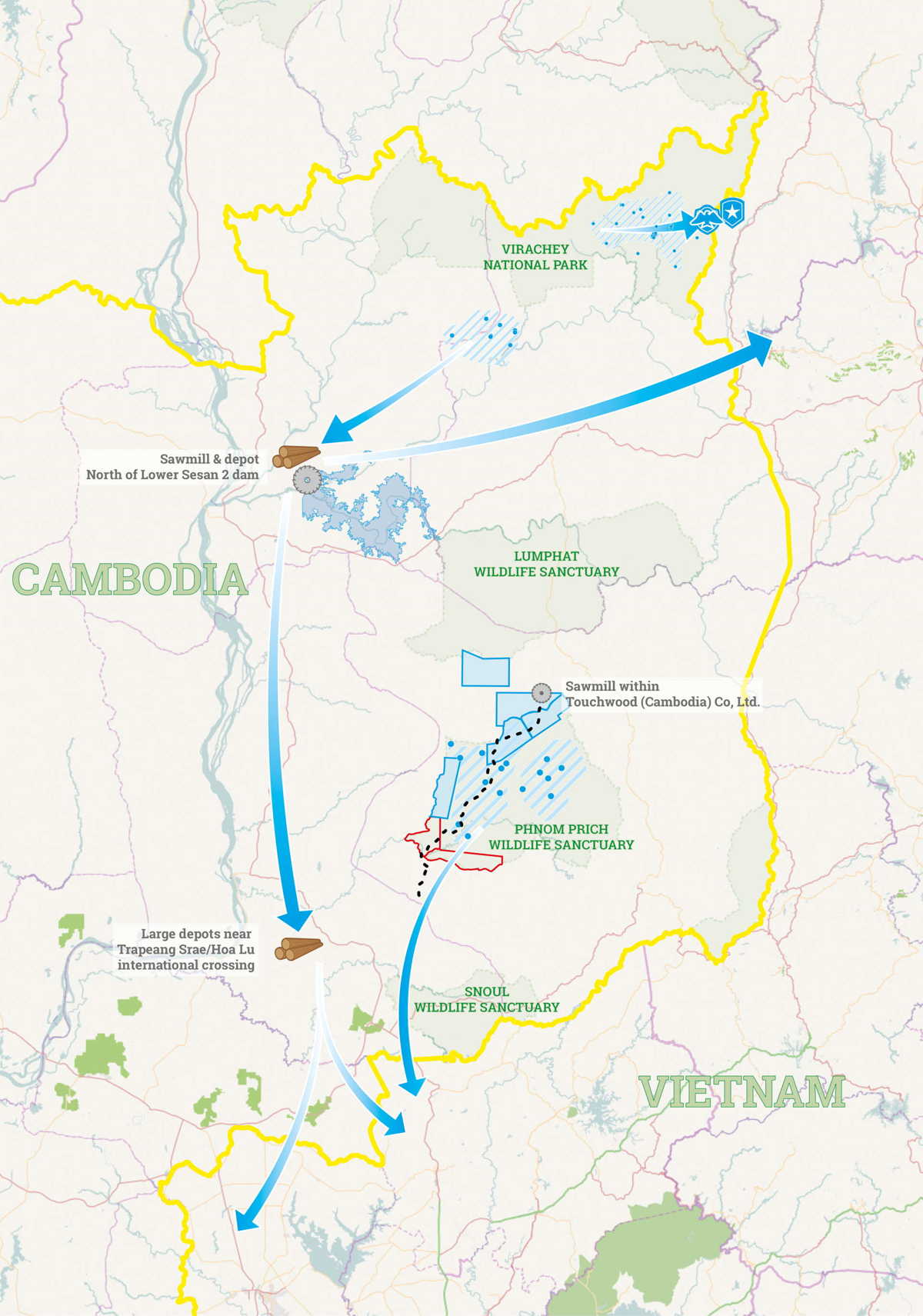
Counting Crime
It is clear that, despite having advanced significantly down the path towards a FLEGT VPA, Vietnam is still recording very substantial volumes of illegal timber imports from Cambodia.
High quality commercially available data analysed by EIA shows 178,119 m3 of logs and sawn timber worth $75,800,641 enter Vietnam from Cambodia during the 2017-18 logging season.
However, there are several reasons to believe that the volumes of timber crossing the border may be greater than that shown in Vietnamese companies’ import declarations, or in the official Vietnam Customs trade statistics derived from them:
Counting Crime
It is clear that, despite having advanced significantly down the path towards a FLEGT VPA, Vietnam is still recording very substantial volumes of illegal timber imports from Cambodia.
High quality commercially available data analysed by EIA shows 178,119 m3 of logs and sawn timber worth $75,800,641 enter Vietnam from Cambodia during the 2017-18 logging season.
However, there are several reasons to believe that the volumes of timber crossing the border may be greater than that shown in Vietnamese companies’ import declarations, or in the official Vietnam Customs trade statistics derived from them:
Avoiding inspection
Many Vietnamese traders are offering Cambodian wood in Vietnam on social media platforms and other marketing mediums. When contacted by EIA investigators posing as prospective buyers, many companies offered two different prices for the same timber; one for the timber with Vietnamese customs, tax and transport papers, and one without. Where buyers take timber without papers, that timber may never pass through Vietnamese Customs, and never enter Vietnamese trade statistics.
Avoiding inspection
Many Vietnamese traders are offering Cambodian wood in Vietnam on social media platforms and other marketing mediums. When contacted by EIA investigators posing as prospective buyers, many companies offered two different prices for the same timber; one for the timber with Vietnamese customs, tax and transport papers, and one without. Where buyers take timber without papers, that timber may never pass through Vietnamese Customs, and never enter Vietnamese trade statistics.
Held in bond
EIA witnessed thousands of cubic meters of fresh-cut Cambodian timber stored in bonded warehouses just inside Vietnamese territory, particularly in Hoa Lu, in Bình Phước province, indicating significant volumes of Cambodian timber imported in recent months may not yet have formally passed customs in Vietnam, or been included in trade statistics.
Held in bond
EIA witnessed thousands of cubic meters of fresh-cut Cambodian timber stored in bonded warehouses just inside Vietnamese territory, particularly in Hoa Lu, in Bình Phước province, indicating significant volumes of Cambodian timber imported in recent months may not yet have formally passed customs in Vietnam, or been included in trade statistics.
In transit
Timber classified as “in transit” may not be included in official Vietnamese import data, as it is not technically imported into Vietnam. Such timber is beyond the scope of Vietnam’s proposed Timber Legality Assurance System.
In transit
Timber classified as “in transit” may not be included in official Vietnamese import data, as it is not technically imported into Vietnam. Such timber is beyond the scope of Vietnam’s proposed Timber Legality Assurance System.
Understated
Vietnamese Customs allow a 10% margin of error in declared volumes. In 2017, EIA investigators were informed by Vietnamese importers in Gia Lai that all importers very accurately measure their logs as a standard procedure before submitting import declarations that reduce the real volume by 10%.
Understated
Vietnamese Customs allow a 10% margin of error in declared volumes. In 2017, EIA investigators were informed by Vietnamese importers in Gia Lai that all importers very accurately measure their logs as a standard procedure before submitting import declarations that reduce the real volume by 10%.
Evidence from the Ground
While investigating illegal logging and trade in Cambodia and on the Cambodia/Vietnam border from October 2017 – March 2018, EIA made numerous observations and collected testimonies from locals, logging camp managers, and military personnel about the volume of timber being transported to Vietnam from each of the three illegal logging hotspots documented.
Combined, EIA’s field estimates suggest that over the recent 2017-18 dry season, if running at full capacity throughout the full season, these three illegal logging operations in Cambodia had the capacity to have sent 1.15 million m3 of timber to Vietnam. This is 6.5 times the volume detailed in Vietnamese import declarations for the same period, and 2.6 times official Vietnam Customs volume reports the whole of 2017.
Evidence from the Ground
While investigating illegal logging and trade in Cambodia and on the Cambodia/Vietnam border from October 2017 – March 2018, EIA made numerous observations and collected testimonies from locals, logging camp managers, and military personnel about the volume of timber being transported to Vietnam from each of the three illegal logging hotspots documented.
Combined, EIA’s field estimates suggest that over the recent 2017-18 dry season, if running at full capacity throughout the full season, these three illegal logging operations in Cambodia had the capacity to have sent 1.15 million m3 of timber to Vietnam. This is 6.5 times the volume detailed in Vietnamese import declarations for the same period, and 2.6 times official Vietnam Customs volume reports the whole of 2017.
Consequences for the VPA
The European Union’s FLEGT Action Plan embodies Voluntary Partnership Agreements (VPAs) as a core tool in addressing illegal logging and the trade in illegal timber. VPAs are bilateral agreements between the EU and timber-producing countries that are legally binding once ratified.
Central to the legal and governance reforms sought by VPAs are Timber Legality Assurance Systems (TLAS), which are designed to verify the legality of timber. Within the Vietnamese VPA, a key reform for Vietnam is the introduction of legislation requiring Vietnamese importers to conduct due diligence to avoid the import of illegally harvested or traded timber.
Once fully operational, Vietnam’s TLAS will issue FLEGT licences to accompany timber exported to the EU, and only licensed timber products will be exported to the EU by Vietnam. Timber issued with a FLEGT licence is considered to meet the requirements of the EUTR, Europe’s flagship anti-illegal logging legislation which exists to ensure no timber with any risks of illegality enters the European market. EU operators placing FLEGT-licenced timber onto the market are not required to conduct any due diligence to ensure their timber is from a legal source.
Vietnam’s delivery of a functioning TLAS depends upon its ability to demonstrate that illegal timber is no longer entering its economy. A systematic failure to respect the laws of neighbouring countries, and apparent widespread corruption by the same officials who will be on the front line of enforcement of Vietnam’s new timber import laws, throws into serious doubt Vietnam’s capacity to achieve this.
The EU cannot accept FLEGT licenses from Vietnam until that country has been able to demonstrate not only the passing of new laws but also that these laws are being effectively enforced. Anything less will effectively undermine the entire FLEGT VPA process and bring into question its capacity to address forest governance issues, while eroding EU consumer trust in licensed products from other countries.
Consequences for the VPA
The European Union’s FLEGT Action Plan embodies Voluntary Partnership Agreements (VPAs) as a core tool in addressing illegal logging and the trade in illegal timber. VPAs are bilateral agreements between the EU and timber-producing countries that are legally binding once ratified.
Central to the legal and governance reforms sought by VPAs are Timber Legality Assurance Systems (TLAS), which are designed to verify the legality of timber. Within the Vietnamese VPA, a key reform for Vietnam is the introduction of legislation requiring Vietnamese importers to conduct due diligence to avoid the import of illegally harvested or traded timber.
Once fully operational, Vietnam’s TLAS will issue FLEGT licences to accompany timber exported to the EU, and only licensed timber products will be exported to the EU by Vietnam. Timber issued with a FLEGT licence is considered to meet the requirements of the EUTR, Europe’s flagship anti-illegal logging legislation which exists to ensure no timber with any risks of illegality enters the European market. EU operators placing FLEGT-licenced timber onto the market are not required to conduct any due diligence to ensure their timber is from a legal source.
Vietnam’s delivery of a functioning TLAS depends upon its ability to demonstrate that illegal timber is no longer entering its economy. A systematic failure to respect the laws of neighbouring countries, and apparent widespread corruption by the same officials who will be on the front line of enforcement of Vietnam’s new timber import laws, throws into serious doubt Vietnam’s capacity to achieve this.
The EU cannot accept FLEGT licenses from Vietnam until that country has been able to demonstrate not only the passing of new laws but also that these laws are being effectively enforced. Anything less will effectively undermine the entire FLEGT VPA process and bring into question its capacity to address forest governance issues, while eroding EU consumer trust in licensed products from other countries.
Recommendations
To the Vietnamese Government
Recommendations
To the Vietnamese Government
Publicly state what the Government will do immediately to prevent further illegal timber imports from Cambodia
Formally and transparently share with Cambodia’s Government official Vietnamese customs records of imports of wood and wood products from Cambodia to enable effective enforcement in Cambodia
Publicly report on progress with the development of new legislation to address imports of illegal timber, as pledged in the VPA texts and annexes initialed in May 2017
Ensure that legislation to address illegal timber imports pledged in VPA texts includes a clear prohibition on importing illegal timber and that its due diligence provisions are robust
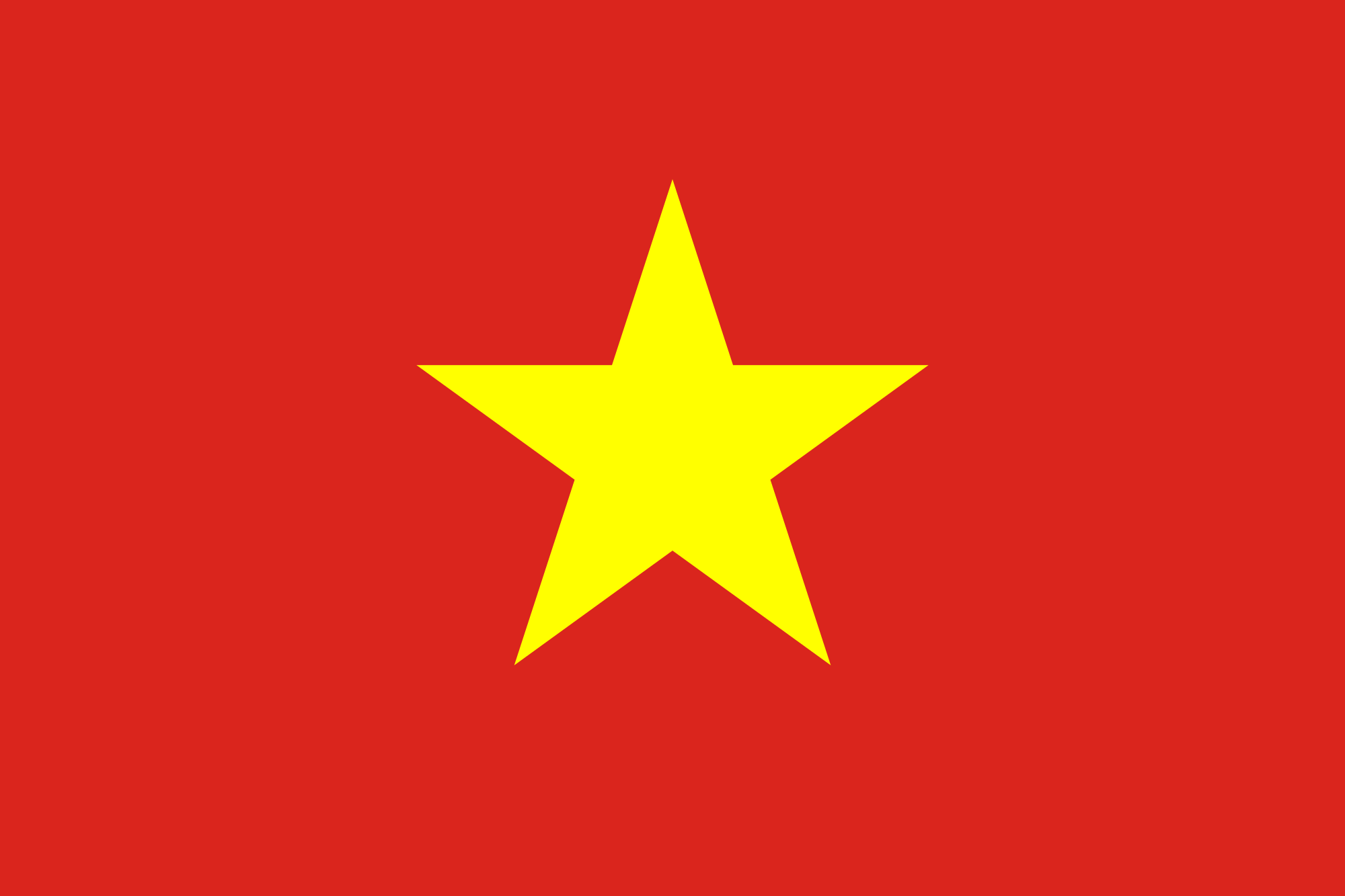
Register companies detailed in Annexes 1 and 2 of the full report, as Category 2 (high risk) in the Organisations Classification System (OCS) as described in table 2 of Annex V of the VPA (the Vietnam Timber Legality Assurance System, or VNTLAS)
Investigate and prosecute the collusion and corruption between Vietnamese state officials and timber traders which drives and facilitates illegal logging in Cambodia and legitimises shipments of illegal timber into Vietnam, and make those public
Ensure Forest Department and customs officials involved in the current illegal timber trade from Cambodia to Vietnam cannot perform duties in implementing functions central to section 6.3.7 “Imported timber (Critical control point 1g)” of Vietnam’s VNTLAS, as detailed in Annex V of the VPA
To the European Commission
To the European Commission
Continue to work with Vietnam through the VPA process to ensure it delivers a TLAS which is robust and fit for purpose, in line with recommendations made to Vietnam above
Ensure existing EUTR cases focussed on Vietnamese supply chains are prosecuted, including those cases submitted by EIA in Italy

Refuse to agree to the initiation of FLEGT licensing for Vietnamese exports to the EU until Vietnam has clearly demonstrated that illegally harvested and/or traded timber is no longer entering the country, regardless of whether it is destined for the EU market
To the Cambodian Government
To the Cambodian Government
Communicate to Vietnam that the border has been closed to the timber trade and request that Vietnam stop accepting Cambodian timber and share records of imports, and the names of exporters, from 2016-18
Instruct all Cambodian border posts to enforce timber export bans
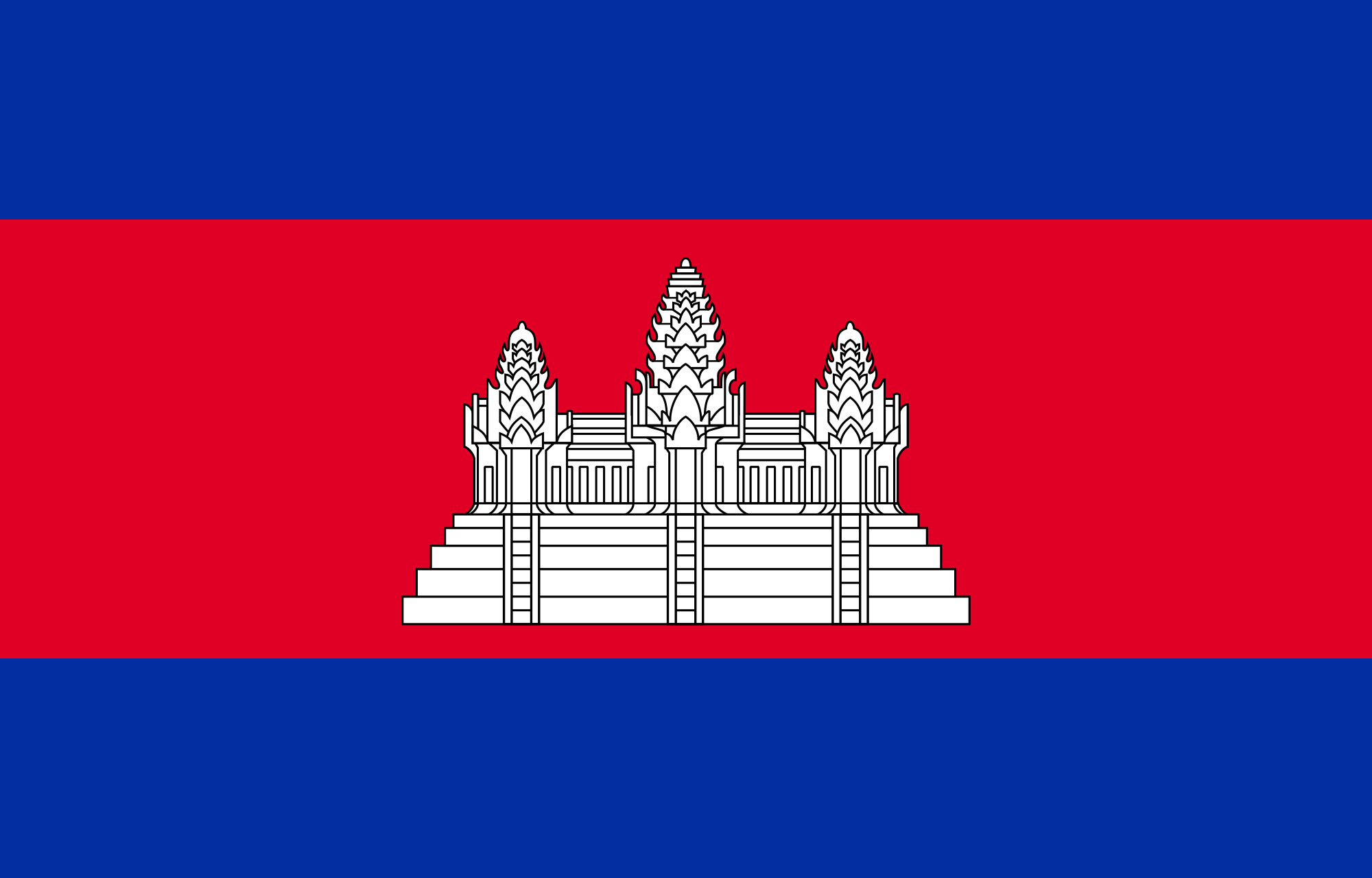
Revoke all Economic Land Concessions within protected areas, including Phnom Prich Wildlife Sanctuary
Permanently revoke all logging concessions within the Lower Sesan 2 Dam
Investigate corruption associated with Border Police post 203, Rattanakiri provincial military police commander Kim Rasmey and Rattanakiri Province Governor Thang Savon
Serial Offender – The full report
Download the full report, detailing the results of our investigations. This includes references and an annex of the organisations at risk of involvement in the trade.
Serial Offender – The full report
Download the full report, detailing the results of our investigations. This includes references and an annex of the organisations at risk of involvement in the trade.

